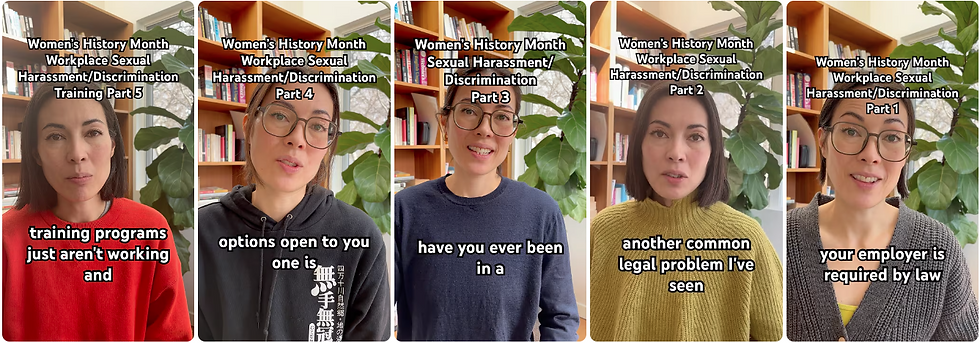Context Matters: Rethinking Sexual Harassment in the Workplace
- Rika Sawatsky

- Sep 23
- 2 min read

Is asking an employee if she wants a “tube steak” sexual harassment?
What about inviting her to be his “companion” and go canoeing—during her first week of work, when he knows she already has a boyfriend?
Or repeatedly urinating in the office sink, exposing himself in the process?
In the recent HRTO decision Flowers v. WE Davies Opticians, the Tribunal concluded these incidents did not amount to sexual harassment because:
“Tube steak” could simply mean a hot dog.
Canoeing could be seen as an innocent social invitation.
Urinating, on its own, isn’t inherently sexual.
Why the Tribunal Missed the Mark
While the Tribunal ultimately found harassment on other grounds (based on overtly sexual commentary), the reasoning on these incidents highlights a bigger problem: a siloed analysis of workplace behaviour that ignores context.
Here’s why context matters:
“Tube steak” wasn’t said over lunch or at a BBQ—it was said in a workplace setting, in a way that clearly upset the complainant.
The canoeing invitation wasn’t just an offer of fresh air. It was the head of the company asking a junior, new to the workplace, to spend one-on-one time in a situation that could be isolating and uncomfortable. With the power imbalance and knowledge that she had a boyfriend, the invitation was unwelcome and pressured.
Urinating in the office sink is not simply a matter of convenience. When repeated and done openly, it is exhibitionism—an act that is inherently performative and intimidating.
The Bigger Picture: Sexual Harassment Is About Power
One of the most common misconceptions about sexual harassment is that it’s about sexual attraction. In reality, it’s often about power, dominance, and control.
By looking at each incident in isolation, the Tribunal risked “missing the forest for the trees.” A pattern of behaviour that is intimidating or coercive becomes clear only when viewed holistically.
A Takeaway for Employers
For workplace harassment policies and training to be effective, they must teach supervisors and employees to:
Recognize the importance of context in harassment cases.
Understand how power dynamics can transform words or acts into intimidation.
Address patterns of conduct, rather than treating each incident in isolation.
Ultimately, the decision in Flowers v. WE Davies Opticians is a reminder that workplace harassment programs need to move beyond checklists and definitions—and instead equip people to recognize harassment in its lived reality.
Contact me to discuss how you might create a meaningful sexual harassment training program that gives your workers and supervisors the tools to recognize and respond to harassment.

